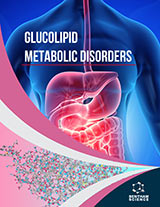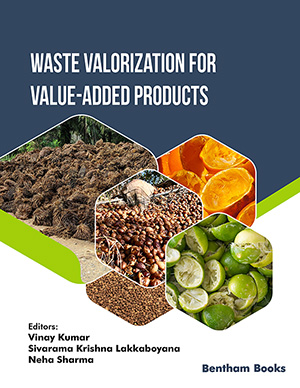Abstract
Background: Pain is a complex physiological and psychological response to a noxious stimulus, sometimes deteriorating a patient’s quality of life. Opioids remain the mainstay treatment modality for chronic pain. Several concerns are raised regarding the long-term use of opioids and the risks associated with their usage. Findings advocate that the longstanding practice of opioid consumption manifests in adverse effects. Objective: Due to the physiological changes opioids instigate in the gastrointestinal tract, opioid-induced constipation remains a common complication pragmatic in patients undergoing opioid medications. Several therapeutic interventions are made available, and the review describes the overall medications with practical examples, aiding in selecting a treatment plan.
Methods: The method comprises data collection from various search engines like PubMed, ScienceDirect, and SciFinder to get coverage of relevant literature for accumulating appropriate information regarding pain management, opioids, opioid-induced constipation, and its pharmacological interventions.
Results: The thoughtful custom of exploring several options to manage opioid-induced constipation must allow patients to benefit from opioid analgesia.
Conclusion: This paper reviews the role of opioids in pain management, the underlying mechanisms of their action, opioid-induced constipation, and pharmacological therapies, with experimental studies aiding clinicians to optimise treatment plans.
Keywords: Pain, Opioids, Opioid-induced constipation, Opioid receptors, Opioid inhibitors, Opioid antagonists.
[http://dx.doi.org/10.1097/j.pain.0000000000001939] [PMID: 32694387]
[http://dx.doi.org/10.1097/j.pain.0000000000000160] [PMID: 25844555]
[http://dx.doi.org/10.3322/caac.21660] [PMID: 33538338]
[http://dx.doi.org/10.1037/a0013628] [PMID: 18837637]
[http://dx.doi.org/10.3344/kjp.2019.32.2.69] [PMID: 31091505]
[http://dx.doi.org/10.1016/S2468-1253(18)30008-6] [PMID: 29870734]
[PMID: 34879799]
[http://dx.doi.org/10.1172/JCI42843] [PMID: 21041958]
[http://dx.doi.org/10.1016/j.biocel.2006.11.016] [PMID: 17194618]
[PMID: 18488078]
[PMID: 32074903]
[http://dx.doi.org/10.1097/ALN.0b013e31823940c0] [PMID: 22037635]
[http://dx.doi.org/10.1053/j.gastro.2018.07.016] [PMID: 30340754]
[http://dx.doi.org/10.1073/pnas.90.12.5391] [PMID: 8390660]
[http://dx.doi.org/10.1002/med.2610110402] [PMID: 1652044]
[http://dx.doi.org/10.1016/B978-0-12-378630-2.00347-9]
[http://dx.doi.org/10.1124/pr.112.007138] [PMID: 24076545]
[http://dx.doi.org/10.1097/ALN.0b013e318238bba6] [PMID: 22020140]
[http://dx.doi.org/10.1093/bjaceaccp/mki004]
[http://dx.doi.org/10.1073/pnas.95.12.7157] [PMID: 9618555]
[http://dx.doi.org/10.1146/annurev.biochem.73.011303.073940] [PMID: 15189164]
[http://dx.doi.org/10.1038/s41598-020-70493-1] [PMID: 32796875]
[http://dx.doi.org/10.36076/ppj.2008/11/S133] [PMID: 18443637]
[http://dx.doi.org/10.1016/S0376-8716(98)00071-4] [PMID: 9716935]
[http://dx.doi.org/10.1073/pnas.90.20.9305] [PMID: 8415697]
[http://dx.doi.org/10.1111/j.1527-3458.2003.tb00248.x] [PMID: 12847558]
[http://dx.doi.org/10.1007/s002130100788] [PMID: 11594439]
[http://dx.doi.org/10.1016/j.bmcl.2013.03.101] [PMID: 23623415]
[http://dx.doi.org/10.1021/acs.jmedchem.5b01499] [PMID: 26878436]
[http://dx.doi.org/10.2174/1568026043451618] [PMID: 14754373]
[http://dx.doi.org/10.1177/2049463712438493] [PMID: 26516461]
[PMID: 8981566]
[http://dx.doi.org/10.1007/978-1-4020-5947-6_2]
[http://dx.doi.org/10.36076/ppj.2011/14/E343] [PMID: 21785485]
[http://dx.doi.org/10.2147/DDDT.S221278] [PMID: 32210534]
[http://dx.doi.org/10.3389/fphar.2018.01388] [PMID: 30555325]
[http://dx.doi.org/10.2174/138161212803582469] [PMID: 22747535]
[http://dx.doi.org/10.1177/1074248418757009] [PMID: 29528698]
[http://dx.doi.org/10.1016/j.cgh.2018.01.021] [PMID: 29374616]
[PMID: 28034973]
[http://dx.doi.org/10.1097/00003643-200106000-00002] [PMID: 11412287]
[http://dx.doi.org/10.1111/j.1743-3150.2004.00553.x] [PMID: 15357847]
[http://dx.doi.org/10.1517/13543784.16.2.181] [PMID: 17243938]
[http://dx.doi.org/10.2165/11630080-000000000-00000]
[http://dx.doi.org/10.1016/S1526-5900(03)00556-X] [PMID: 14622694]
[PMID: 17087429]
[http://dx.doi.org/10.1016/0885-3924(94)90165-1] [PMID: 7912710]
[http://dx.doi.org/10.1111/pme.12912] [PMID: 26461075]
[PMID: 17983254]
[http://dx.doi.org/10.1097/ALN.0000000000002184] [PMID: 29553984]
[http://dx.doi.org/10.2147/TCRM.S141332] [PMID: 28919771]
[http://dx.doi.org/10.36076/ppj.2008/11/S105] [PMID: 18443635]
[http://dx.doi.org/10.1016/j.pmn.2007.02.004] [PMID: 17723928]
[http://dx.doi.org/10.1038/nrrheum.2010.24] [PMID: 20357788]
[http://dx.doi.org/10.1177/2050640618818305] [PMID: 30788113]
[http://dx.doi.org/10.1111/pme.12911] [PMID: 26461071]
[http://dx.doi.org/10.1097/MPG.0000000000000266] [PMID: 24345831]
[http://dx.doi.org/10.1007/s00520-003-0525-x] [PMID: 14505158]
[http://dx.doi.org/10.1055/s-0032-1301754] [PMID: 23449608]
[http://dx.doi.org/10.1046/j.1365-2036.2001.00982.x] [PMID: 11380313]
[http://dx.doi.org/10.1006/taap.1999.8830]
[http://dx.doi.org/10.1016/B978-0-08-097037-0.00066-X]
[http://dx.doi.org/10.1080/14656566.2018.1561863] [PMID: 30625013]
[http://dx.doi.org/10.1021/acs.analchem.0c00450] [PMID: 32412733]
[http://dx.doi.org/10.1016/S0885-3924(01)00369-4] [PMID: 11779668]
[http://dx.doi.org/10.5414/CP201646] [PMID: 22541841]
[http://dx.doi.org/10.1185/03007995.2014.971355] [PMID: 25265132]
[http://dx.doi.org/10.1016/j.clinthera.2015.02.010] [PMID: 25757607]
[http://dx.doi.org/10.2147/CEG.S143913] [PMID: 29416370]
[http://dx.doi.org/10.1007/s40264-017-0511-8] [PMID: 28194654]
[http://dx.doi.org/10.1016/j.jpainsymman.2017.08.022] [PMID: 28919541]
[http://dx.doi.org/10.1177/1756283X16648869] [PMID: 27582887]
[http://dx.doi.org/10.1038/clpt.1992.106] [PMID: 1623695]
[http://dx.doi.org/10.1001/jama.2019.16029] [PMID: 31682683]
[http://dx.doi.org/10.1016/j.jpainsymman.2009.02.234] [PMID: 19713070]
[http://dx.doi.org/10.1016/j.jval.2010.11.003] [PMID: 21211500]
[http://dx.doi.org/10.1007/s00210-013-0850-7] [PMID: 23549670]
[http://dx.doi.org/10.1007/s00210-013-0844-5] [PMID: 23512167]
[http://dx.doi.org/10.1016/j.jpain.2014.01.317]
[http://dx.doi.org/10.2147/JPR.S243435] [PMID: 32547183]
[http://dx.doi.org/10.1080/00498254.2018.1536815] [PMID: 30351180]
[http://dx.doi.org/10.1007/s40265-019-01160-7] [PMID: 31267482]
[http://dx.doi.org/10.1016/j.bmcl.2018.11.007] [PMID: 30446313]
[http://dx.doi.org/10.1016/j.dmpk.2018.12.002] [PMID: 30770183]
[http://dx.doi.org/10.1111/nmo.13563] [PMID: 30821019]
[http://dx.doi.org/10.1002/cpdd.387] [PMID: 28960888]
[http://dx.doi.org/10.1093/pm/pnw325] [PMID: 28371937]
[http://dx.doi.org/10.2165/11470590-000000000-00000] [PMID: 23083112]
[http://dx.doi.org/10.1016/j.lfs.2010.03.015] [PMID: 20307554]
[http://dx.doi.org/10.1080/17474124.2019.1568238] [PMID: 30791758]
[http://dx.doi.org/10.1177/1756283X11423706] [PMID: 22282705]
[http://dx.doi.org/10.1016/j.jpba.2016.08.030] [PMID: 27611096]
[http://dx.doi.org/10.14309/ajg.0000000000000304] [PMID: 31295161]
[http://dx.doi.org/10.1056/NEJMoa0800670] [PMID: 18509121]
[http://dx.doi.org/10.1002/phar.1711] [PMID: 26945548]
[http://dx.doi.org/10.1111/pme.12437] [PMID: 24716835]
[http://dx.doi.org/10.1111/j.1365-2036.2008.03881.x] [PMID: 19006537]
[http://dx.doi.org/10.7759/cureus.16201] [PMID: 34367804]






























